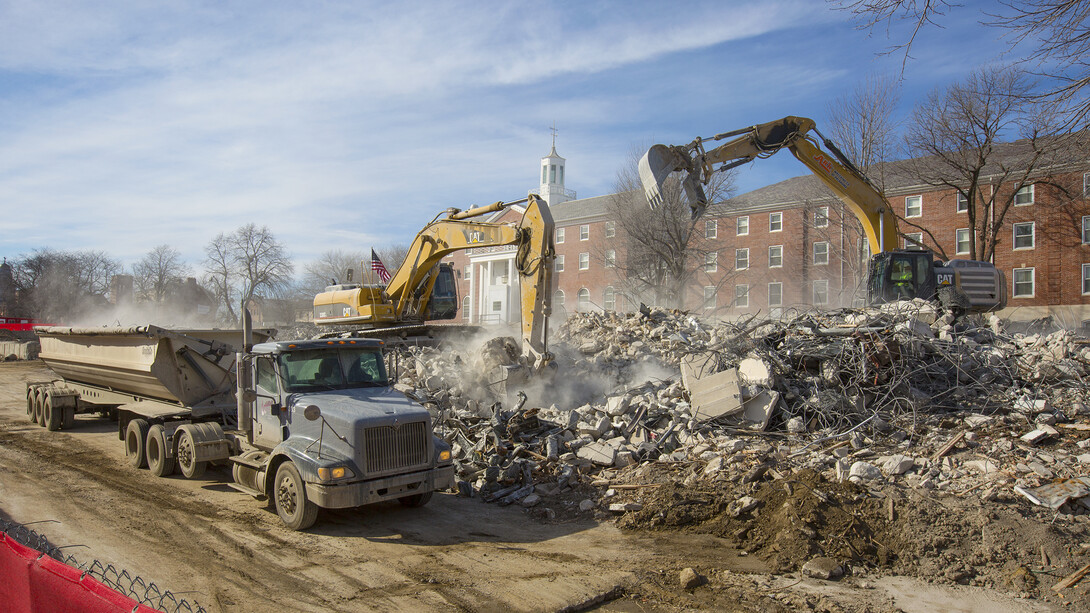
After weather-related delays in early January, removal of debris from the Cather and Pound halls implosion site is on schedule.
Harrison Williams, a project manager for Ark Wrecking Company, said nearly 80 percent of the rubble and about 50 percent of the foundation of the two towers has been hauled away to Lincoln’s landfill. The site is to be turned back over to the university in late spring.
“The project is right on schedule at this point,” Williams said. “It looks like we should be done hauling debris the week of March 5, which will allow dirt work and grading to begin.”
The Cather-Pound site has been designated as a building space on the university’s master plan. No immediate plans for a new building have been made and the site will be converted into a temporary green space that will continue to allow access to Neihardt Hall and nearby Greek houses.
Learn more about the university’s decision to replace Cather and Pound halls.

Here’s the rubble removal process broken down by the numbers.
One — City officials added a new scale at the Lincoln landfill to help keep cleanup of the Cather-Pound site on schedule. The city was already planning to add the new scale, but brought it online ahead of schedule due to the increased truck traffic generated by the implosion.
Four — Excavators on site working to break down, sort and load the rubble onto trucks.
Eight — Maximum number of trucks used to haul rubble away from the site. Williams said that number was reduced to six as it proved more efficient in terms of driver waiting times.
10.5 — Hours the site is worked each day. Williams said work is generally active during daylight hours, between 8 a.m. to 6:30 p.m.
25 — Estimated maximum tonnage of rubble hauled by an individual truck on a single trip to the Lincoln landfill.
50 — Most number of loads hauled from the site in one day.
150 — Estimated total, in tons, of building material recycled by Ark Wrecking during the implosion-prep phase of the Cather-Pound project. Recycled materials were primarily steel and copper.
363 — Cubic yards of concrete contained in each of the two crane foundations used to erect Cather and Pound halls. The foundations are 35-feet by 35-feet square and an estimated 8-feet deep. The removal of the foundations will be one of the final steps in the debris removal process before dirt work begins.
15,067 — Tons of Cather-Pound rubble hauled into the Lincoln landfill as of Feb. 19. The rubble was tentatively going to be used in road construction. However, due to federal regulations and costs, the rubble will not be repurposed.
30,000 — Estimated total weight, in tons, of dirt that will be hauled in to convert the Cather-Pound implosion site to a temporary greenspace.







